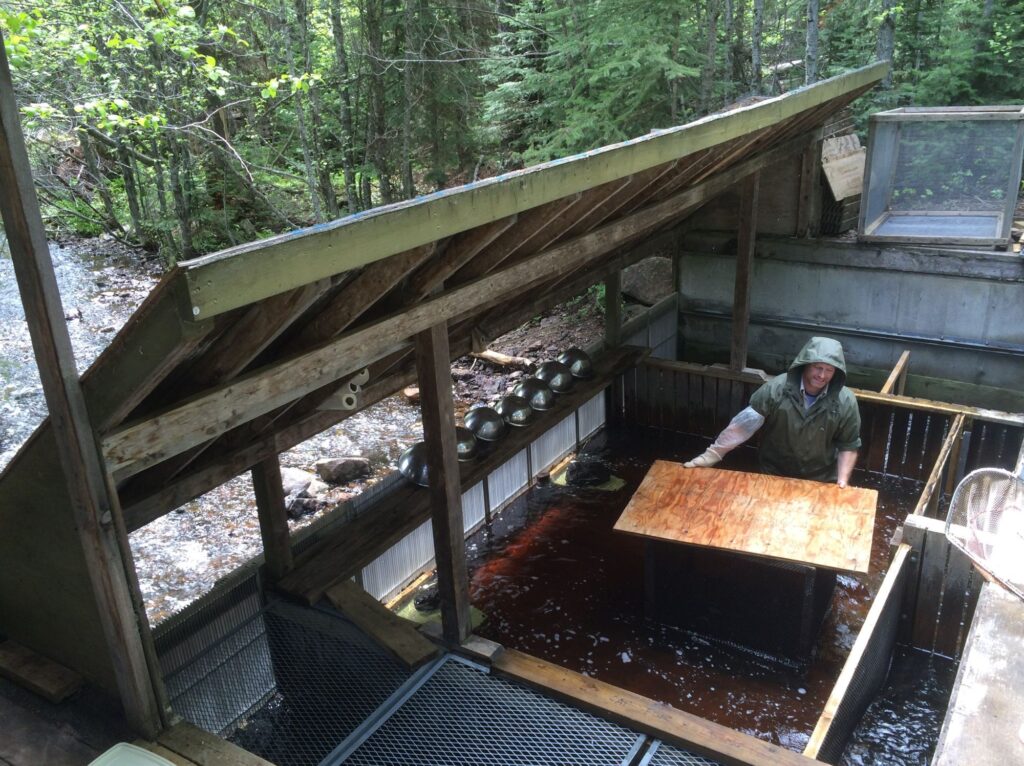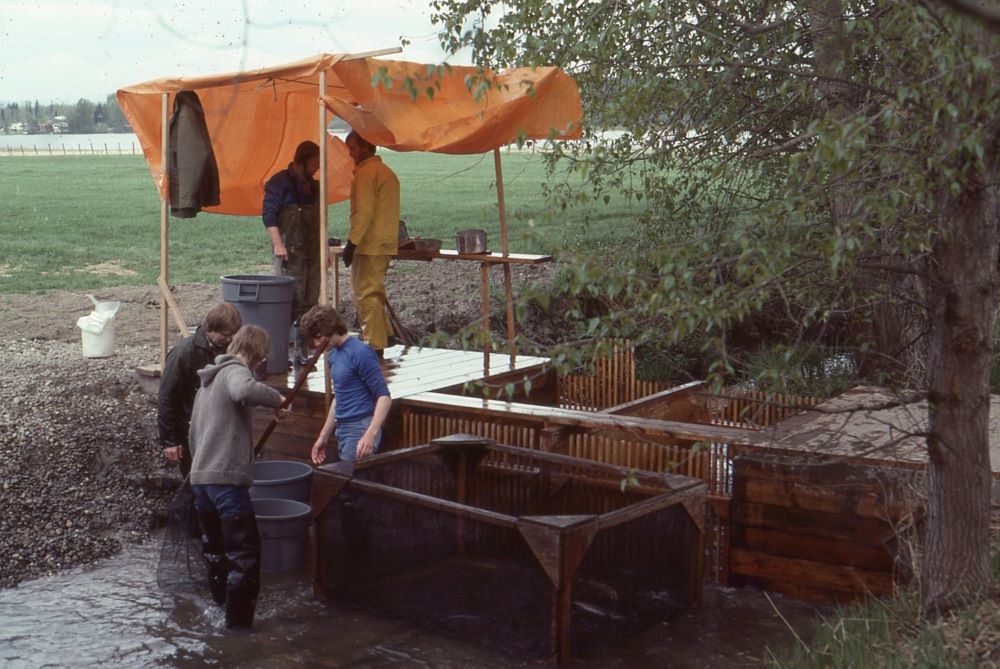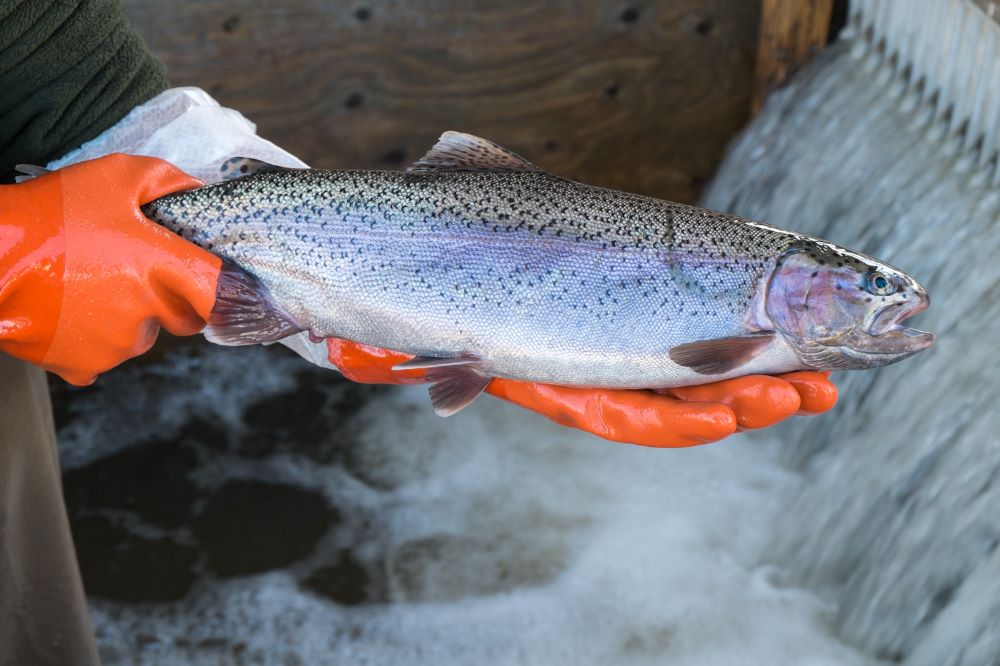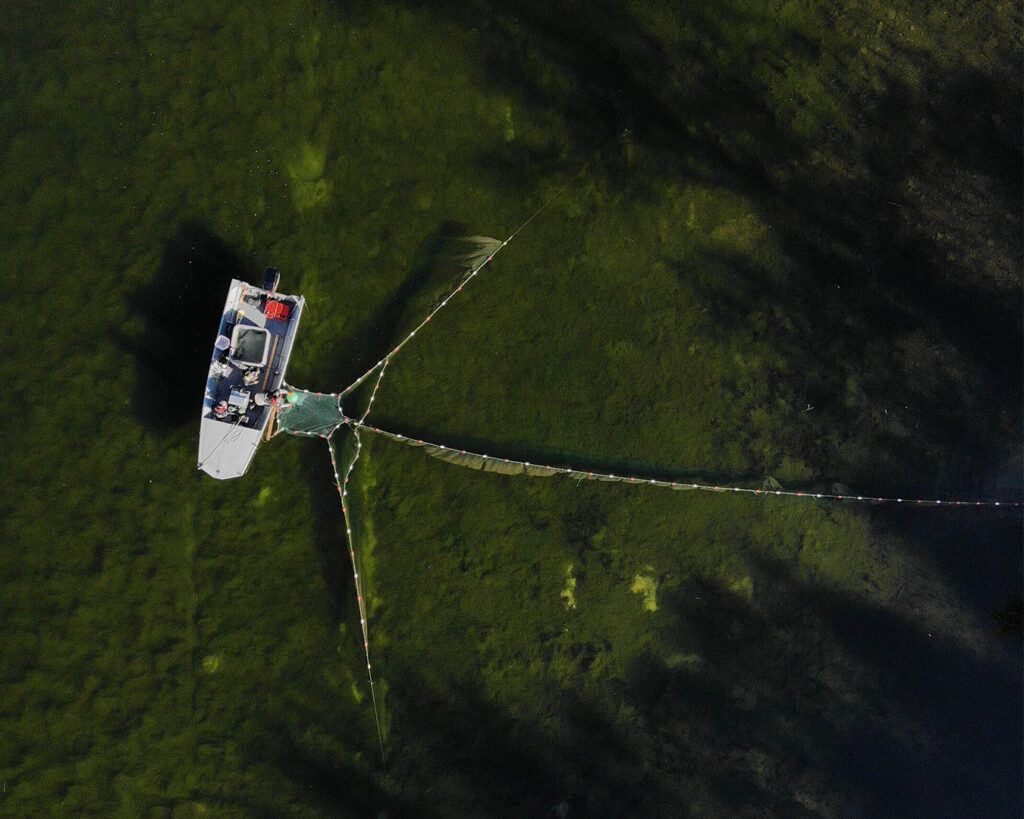British Columbia’s small lakes stocking program is unique in how it sources trout to support recreational fisheries. For decades, the program (now managed by the Freshwater Fisheries Society of BC) has relied upon “broodstock lakes.” Compared to most other North American hatchery-program models, this novel approach has several benefits.
Our rich fish resource
British Columbia is blessed with an impressive diversity and abundance of freshwater trout populations. Wild rainbow trout can be found in almost every major watershed, in waterbodies ranging from small lakes and streams to large lakes, rivers, and even salt water (as steelhead). From large-bodied, aggressive fish like Quesnel and Kootenay lakes’ fish-eating, or piscivorous, trout to feisty smaller fish like Pennask Lake’s insectivorous fish, which feed on aquatic and terrestrial insects, the province’s rainbow trout are world-renowned among anglers.
Small lakes stocking and the use of broodstock lakes
The stocking program in British Columbia relies on a few key wild populations of rainbow trout to support stocking up to 800 small lakes a year. Currently, wild rainbow trout for the program include those from the Blackwater River, Horsefly River, and Pennask Lake. Highly prized, these wild fish populations have been used to develop “strains” to support rainbow trout stocking. The use of wild rainbow trout in our stocking program sets B.C. apart from most other jurisdictions in North America and provides an exceptional experience for small lakes anglers.
It is important to note that conservation is always the first priority, and fisheries managers would never jeopardize the wild source populations for the stocking program. Rather than return annually to collect wild adults in the streams – and potentially impact the population’s spawning numbers – the Society, in collaboration with the Province, maintains in different regions what are collectively called “broodstock lakes.” The objective of a broodstock lake is to rear offspring of the original wild population to maturity in the lake, and then spawn these fish. In turn, offspring of the spawned fish support the stocking program. Broodstock lakes are rigorously managed to maintain genetic diversity, and to ensure that enough fish are available for stocking each year.
Benefits of broodstock lakes over other hatchery program models
Broodstock lakes help protect wild populations from the over-exploitation associated with wild adult collections for brood. Only Pennask Lake does not receive any hatchery fish. All other broodstock lakes have only ever supported stocked or feral (gone wild) trout that originate from historic stocking events, not wild populations.
Broodstock lakes provide a natural environment in which fish can rear. Thus, the domestication and selection – including traits not suited to natural environments – that are associated with extending rearing times in a captive environment (like hatchery raceways and tanks) are reduced. These lakes help maximize the likelihood that the desirable traits in the different strains are maintained in a natural environment (i.e., not selectively removed in a captive hatchery environment over time).
Finally, broodstock lakes provide a cost-effective way of rearing fish. There is no need for either major infrastructure to maintain large captive populations over time, or annual fish purchases from a commercial aquaculture facility.
Pennask Lake is exceptional in that it contains a wild population of rainbow trout with no recent record of stocking. It is also unique in that it has the largest, most reliable wild population of rainbow trout known in the province. Despite being a source of broodstock for many decades, there is no evidence of negative impacts to the wild population. The lake is managed for conservation first, with set escapement targets. Once conservation and First Nations requirements are met, the Province permits the Freshwater Fisheries Society to access wild broodstock for the stocking program.

Staff preparing fish trap at a broodstock egg station
The challenges of broodstock lakes management
Unfortunately, what makes a good small lake for fishing also makes a good broodstock lake. Productive lakes that allow for good growth and high survival are ideal for rearing broodstock that can grow to a decent size relatively quickly, and produce a lot of eggs for the hatchery program. But as many anglers know, these same lakes have great fisheries.
In a perfect world, broodstock lakes would not have any fishing pressure. The fish population could then be managed ideally to produce the best broodstock possible for the Province’s annual stocking needs. However, there are limited numbers of lakes that meet the necessary criteria of a broodstock lake: good productivity, minimum lake size, ease of lake access, appropriate environmental conditions, and proximity to a major hatchery facility.
A thriving fishery is almost always present on a good candidate for a broodstock lake. While this is not necessarily a major hurdle, it does require some management adjustments to both support the fishery and maintain a healthy broodstock. In addition, the Society tries to maintain two broodstock lakes for each strain to ensure there is a back-up in case one lake suffers some unforeseen problem that impacts fish.
With changing environmental conditions, even long-established broodstock lakes are having challenges maintaining adequate temperature and oxygen regimes. Another problem is dealing with invasive species like goldfish, bass, and yellow perch – potential competitors or predators of trout. Because of these challenges, the Society is now in search of new potential broodstock lakes to ensure a reliable source of broodstock in the future.

Staff setting trap net at Dragon Lake (broodstock lake)
Broodstock lake examples
Currently, we have a handful of broodstock lakes that are mainly used to support the production of rainbow trout. There is also one lake that is exclusively used to produce eastern brook trout.
Dragon Lake in the Cariboo Region is probably the best-known broodstock lake. For decades, this lake has both supported a popular fishery and provided rainbow trout for the stocking program. In recent years, the lake has been used as a primary broodstock lake for the Blackwater River strain of rainbows. The Blackwater River is a tributary of the Fraser, and supports a piscivorous population of rainbow trout.
Premier Lake is the back-up lake for the Blackwater River strain. Unfortunately, challenges on both lakes now necessitate identifying a replacement broodstock lake. Dragon Lake and Premier Lake have both been unable to produce adequate numbers of fish to support the small lakes stocking program. Society staff are working with B.C.’s fisheries regions to identify new potential broodstock lakes.


Dragon Lake egg station fish fence, 1981 | Rainbow trout at Dragon Lake egg station (Don Peterson)
In summary
British Columbia’s unique small lakes stocking program stands out for its innovative use of broodstock lakes to source wild-origin rainbow trout for stocking. The program supports sustainable fisheries that do not over-exploit wild stocks. Broodstock lakes provide a natural rearing environment, ensuring fish retain traits suited for wild habitats while minimizing the costs associated with traditional hatchery systems. Despite the challenges posed by environmental changes and fishing pressures, ongoing efforts to identify new broodstock lakes promise to sustain this vital program.
Author: Sue Pollard, Freshwater Fisheries Society of BC
